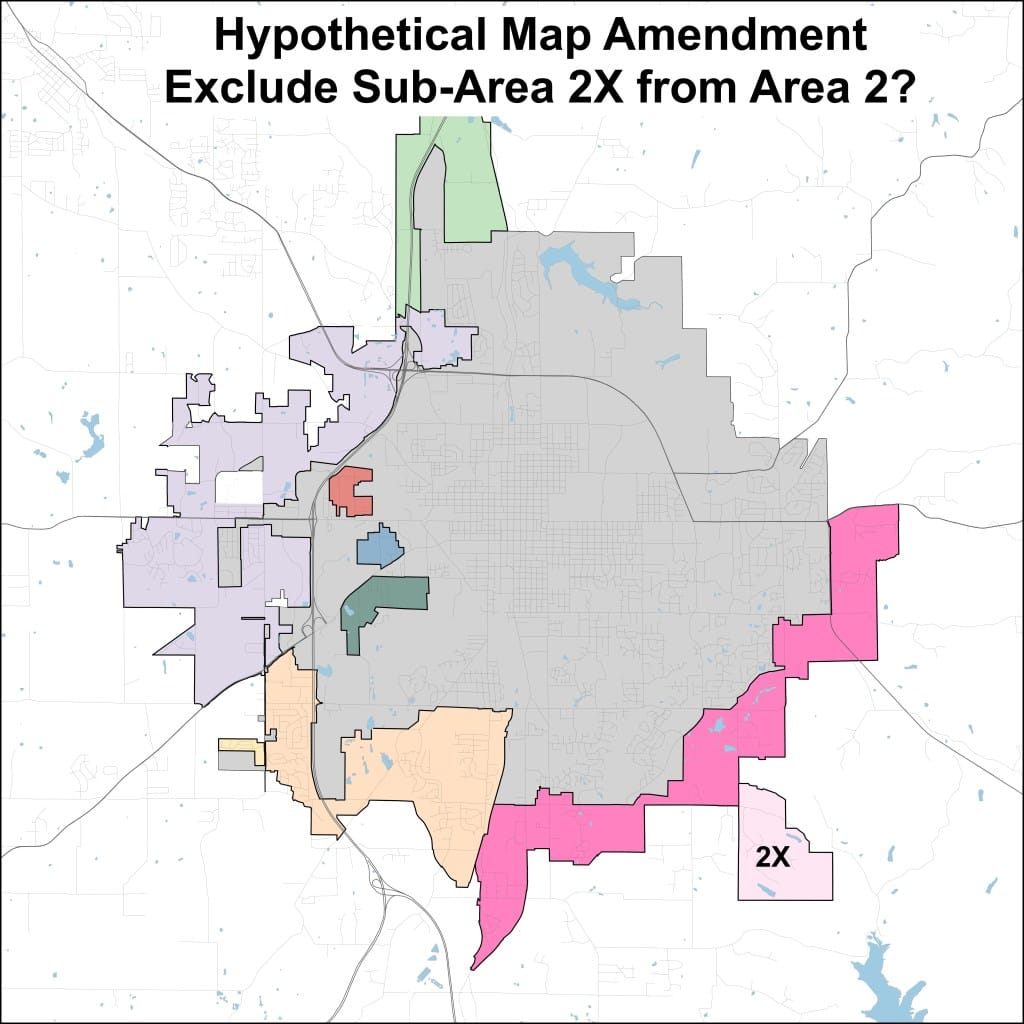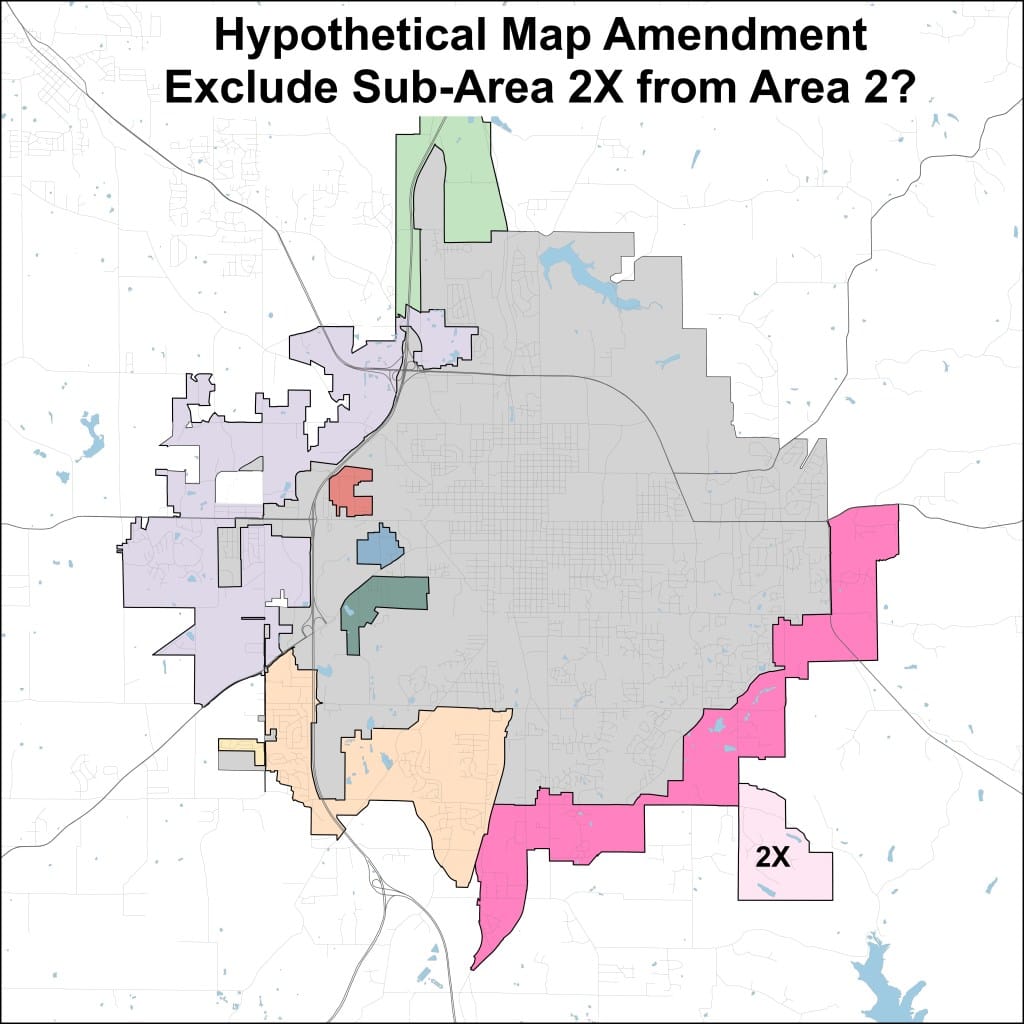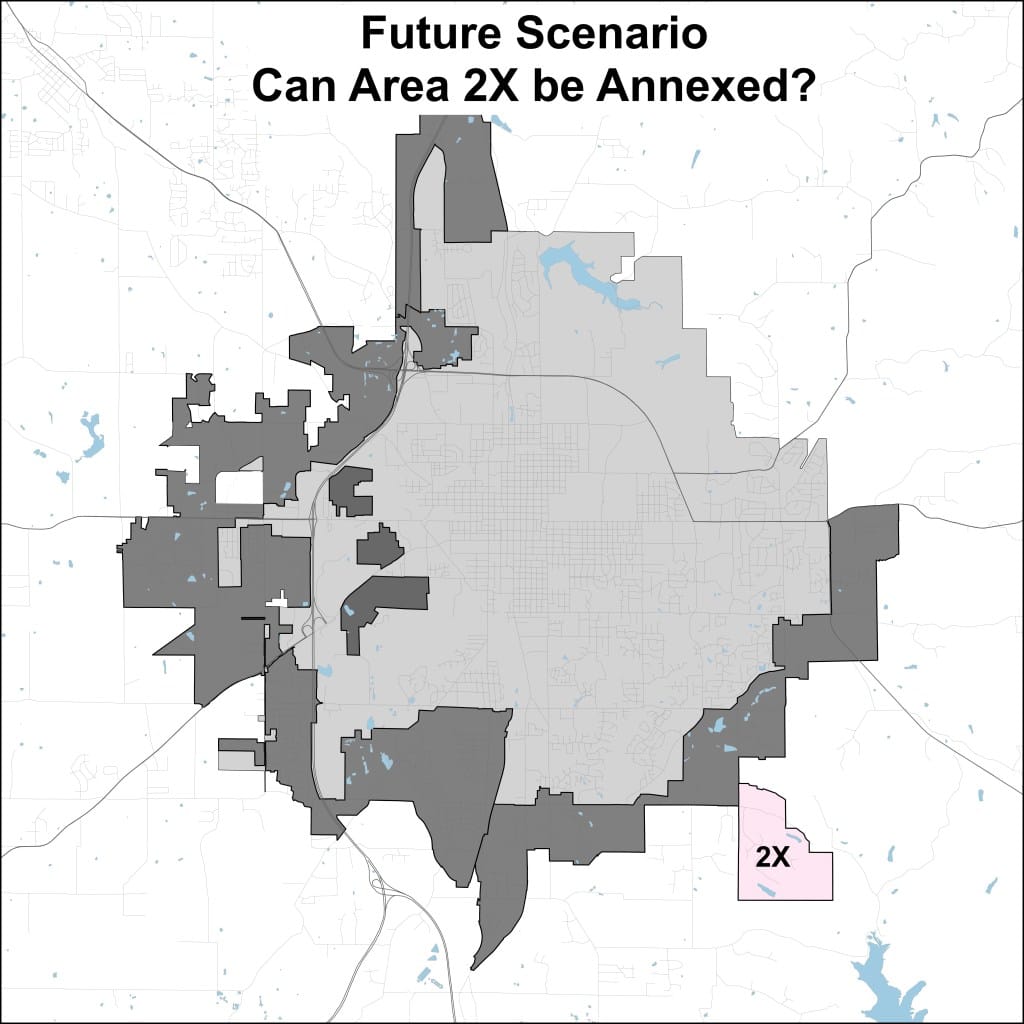State law OK’d in 2015 might curb future Bloomington expansion, if current annexation proposals are approved



A work session held by Bloomington’s city council on Friday at noon highlighted a fact about Indiana’s current annexation law, which has a potential impact that does not seem to be widely understood.
A 2015 amendment to the state statute on annexation looks like it gives a city exactly one more chance to expand along any segment of its boundary. After that, the annexed area forms a kind of wall to future annexation. It’s not possible to add another layer right on top of that one expansion.
In more technical terms, if a city completes an annexation after June 30, 2015, the annexed territory cannot be considered as part of the city, when it comes to a future determination about whether some additional territory shares enough of the city boundary that it can be annexed—unless that future annexation is voluntary.
In recent months, some public remarks from Bloomington’s John Hamilton (D) have alluded to the possibility that the state legislature might eventually enact laws to prevent cities from undertaking any future involuntary annexations.
That’s not an unfounded speculation by Hamilton. Stopping involuntary annexation across the state is a goal for state representative Jeff Ellington (R). Ellington’s District 62 includes the southwest corner of Monroe County, including a bit of Bloomington.

Last Sunday, at the county fairgrounds, during an in-person public information meeting on Bloomington’s annexation Ellington was invited to the mic, where he said: “Anything I can get to slow that [annexation] train down, I’m going to take. I don’t care how we get it.”
Ellington added, “I’ve had legislation this last couple of years to kill involuntary annexation all across the state. It’s not made it to a committee hearing, but I am not going to stop.”
The 2015 amendment looks like it already accomplished much of Ellington’s goal.
The impact of the 2015 amendment was highlighted at the city council’s Friday work session by councilmember Isabel Piedmont-Smith, who asked the city’s corporation counsel, Philippa Guthrie, to explain the topic of contiguity—as it relates to future annexation and the city’s current boundaries.
Piedmont-Smith prefaced the request by saying she’d had an email exchange with Guthrie and city council administrator/attorney Stephen Lucas on the topic. About the information she’d received, Piedmont-Smith said, “I think that’s important for all council members to know.”
Guthrie deferred to the city’s outside counsel on annexation, Steve Unger, an attorney with Bose McKinney & Evans.
Unger stated: “There is some language that was amended into this statute a few years ago, that can be read to mean that once you complete an annexation after 2015, the area that you annex may not be included for purposes of determining continuity in a future annexation, unless that future annexation is voluntary or super-voluntary.”
The impact of the 2015 amendment is relevant to the current phase of Bloomington’s annexation process, as councilmembers are considering possible amendments to the boundaries of some areas.
If an area is not annexed now, other land that is annexed could block the un-annexed territory from ever being a part of an area that touches enough of the current city boundary to be annexed.
As Unger put it: “If you do not include an area in the annexation territory now, there is risk that later on, if that area was not independently contiguous to your current boundaries, that it may not be considered for purposes of a future annexation to determine if it’s contiguous.”
The basic definition of contiguity in Indiana’s state statute says that at least one-eighth of an annexed area’s perimeter has to coincide with the city’s boundary.
The impact of the 2015 amendment analyzed by Unger is easy to miss, because the key wording appears in a section with the title, “Property tax exemption for agricultural property.”
In fact, Unger said at Friday’s work session that, “Another way to read that statute, is that that restriction only applies to agricultural areas.”
How could wording in a statutory section about agricultural land apply to non-agricultural land, covered in the state statute’s chapter on annexation?
One of the wording changes in the 2015 amendment expands the scope of the existing contiguity constraint, from the section, which is about agricultural land only, to the whole chapter. Words added by the 2015 amendment are in bold:
(d)(e) Territory annexed under this section or (after June 30, 2015) this chapter may not be considered a part of the municipality for purposes of annexing additional territory under section 3 or 4 of this chapter. However, territory annexed under this section or (after June 30, 2015) this chapter shall be considered a part of the municipality for purposes of annexing additional territory under section 5 or 5.1 of this chapter.
Sections 5 and 5.1 deal with voluntary annexations.
The Indiana Association of Cities and Towns (now called Accelerate Indiana Municipalities) recognized the impact of the 2015 amendment in a white paper on the topic of the legislation.
AIM’s conclusion about the significance of the 2015 amendment for future annexation was (emphasis in original): “Therefore, for any annexation done after June 30, 2015, the new territory may not be considered part of the municipality for purposes of annexing additional territory unless the future annexation is a voluntary or super-voluntary annexation.”
That means any area that’s on the non-city side of territory that is annexed after 2015 would need to find some pathway to the city boundaries as they existed in 2015, to establish adequate contiguity. The one-eighth shared boundary requirement works against an adequate geometry for that pathway.
A similar consideration applies to any “island” that might be created by annexation, if it has no shared boundary with the existing city lines: The new “island” could not ever be annexed, unless the annexation is voluntary.
That has implications for the status of some Cook Group property, which is excluded from annexation for the duration of a 15-year, $1.5 million payment-in-lieu-of-annexation deal with the city. The agreement was approved by the city council in October 2017.
Assuming no other changes to the state statute, and assuming the surrounding area is annexed by the city as currently proposed for Area 1A, Cook’s property could not be annexed on an involuntary basis, even after the payment-in-lieu deal expires.
The public hearing on Bloomington’s annexation, which was recessed on Aug. 4, continues next Wednesday, Aug. 11, starting at 6 p.m. It will not be accessible in person.




Comments ()